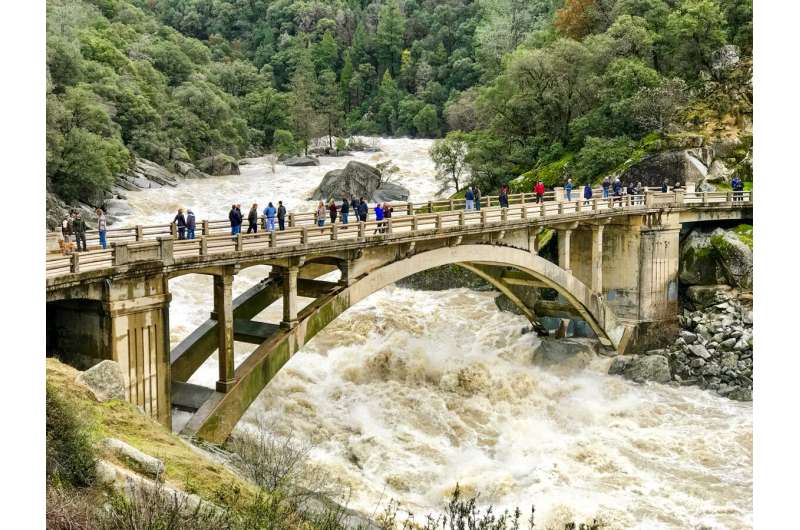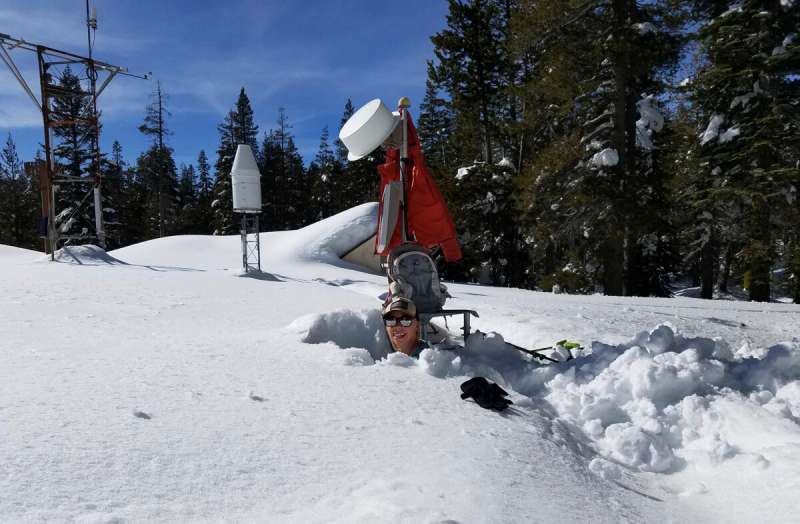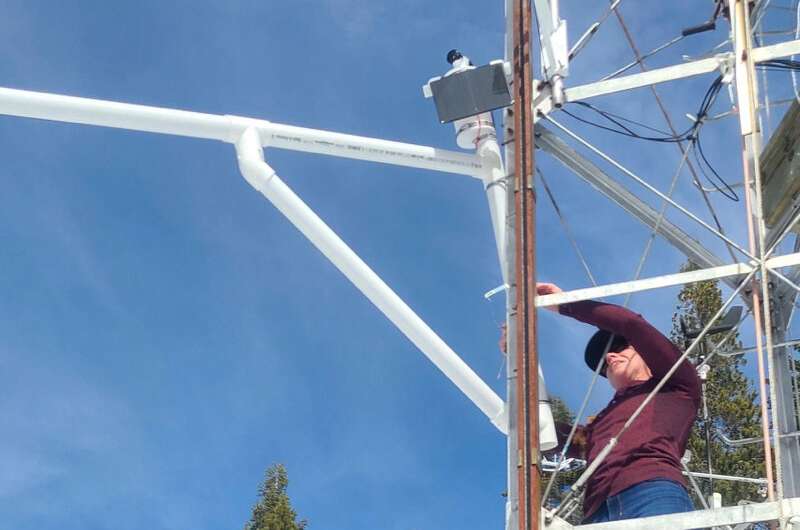Study develops framework for forecasting contribution of snowpack to flood risk during winter storms

In the Sierra Nevada, midwinter "rain-on-snow" events occur when rain falls onto existing snowpack, and have resulted in some of the region's biggest and most damaging floods. Rain-on-snow events are projected to increase in size and frequency in the coming years, but little guidance exists for water resource managers on how to mitigate flood risk during times of rapidly changing snowpack. Their minute-by-minute decisions during winter storms can have long-lasting impacts to people, property, and water supplies.
A new study in iScience by a team from DRI, University of California, Berkeley, the National Weather Service, and University of Nevada, Reno, provides the first framework for a snowpack decision support tool that could help water managers prepare for potential flooding during rain-on-snow events, using hourly data from existing snow monitoring stations.
"During rain-on-snow events, the people managing our water resources always have decisions to make, and it's really challenging when you're dealing with people's lives and property and livelihood," said DRI Graduate Assistant and lead author Anne Heggli, M.S. "With this work, we're leveraging existing monitoring networks to maximize the investment that has already been made, and give the data new meaning as we work to solve existing problems that will potentially become larger as we confront climate change."
To develop a testable framework for a decision support tool, Heggli and her colleagues used hourly soil moisture data from UC Berkeley's Central Sierra Snow Laboratory from 2006-2019 to identify periods of terrestrial water input. Next, they developed quality control procedures to improve model accuracy. From their results, they learned lessons about midwinter runoff that can be used to develop the framework for a more broadly applicable snowpack runoff decision support tool.

"We know the condition (cold content) of the snowpack leading into a rain-on-snow event can either help mitigate or exacerbate flooding concerns," said study co-author Tim Bardsley of the National Weather Service in Reno. "The challenge is that the simplified physics and lumped nature of our current operational river forecast models struggle to provide helpful guidance here. This research and framework aims to help fill that information gap."
"This study and the runoff decision framework that has been built from its data are great examples of the research-to-operations focus that has been so important at the Central Sierra Snow Lab for the past 75 years," said study coauthor Andrew Schwartz, Ph.D., manager of the snow lab. "This work can help inform decisions by water managers as the climate and our water resources change, and that's the goal—to have better tools available for our water."
The idea for this project was sparked during the winter of 2017, when Heggli and her brother were testing snow water content sensors in California. Several large rain-on-snow events occurred, including a series of January and February storms that culminated in the Oroville Dam Spillway Crisis.
"I noticed in our sensors that there were these interesting signatures—and I heard a prominent water manager say that they had no idea how the snowpack was going to respond to these rain-on-snow events," Heggli explained. "After hearing the need of the water manager and seeing the pattern in the data, I wondered if we could use some of that hourly snowpack data to shave off some level of uncertainty about how the snowpack would react to rain."

Heggli is currently enrolled in a Ph.D. program at UNR, and has been working under the direction of DRI faculty advisor Benjamin Hatchett, Ph.D., to advance her long-term goal of creating a decision support tool for reservoir operators and flood managers.
The results of this study can next be used to develop basin-specific decision support systems that will provide real-time guidance for water resource managers. The study results will also be used in a new project with the Nevada Department of Transportation.
"Anne's work, inspired by observation, demonstrates how much we still can learn from creatively analyzing existing data to produce actionable information supporting resource management during high-impact weather events as well as the value of continued investment to maintain and expand our environmental networks," said Hatchett, DRI Assistant Research Professor of Atmospheric Science.
More information: Anne Heggli et al, Toward snowpack runoff decision support, iScience (2022). DOI: 10.1016/j.isci.2022.104240
Provided by Desert Research Institute




















